
table of contents
- Easy-care flowering plants
- Single leaf (Spathiphyllum)
- Flamingo flower (Anthurium)
- Robust green plants
- Non-toxic ornamental foliage plants
- Elephant foot (Beaucarnea recurvata)
- Cobbler palm (Aspidistra elatior)
At this point we present 12 easy-care and robust houseplants that will also transform your home into a green oasis. From lush flowering shrubs to fast-growing climbers, there is a suitable plant for every taste.
Easy-care flowering plants
Most of the flowering houseplants come from tropical or subtropical regions, as this is where the greatest variety of shapes and colors could develop due to the favorable climate. We have limited ourselves to vigorous and uncomplicated species that are easy to make to bloom.
Single leaf (Spathiphyllum)
There are around 40 different types of single leaf, also known as leaf flags, which vary in height. The popular variety Spathiphyllum wallisii, of which there is even a fragrant variety called 'Mauna Loa', is particularly vigorous.

Family: Araceae, Arum Family
Homeland: Colombia, Venezuela
Poisonous: yes, for humans and pets
Flowering time: March to September
Height: depending on the species up to 120 centimeters
Location: light to partially shaded, also tolerates darker locations very well, warm all year round
Watering and fertilizing: Water moderately, use warm water, reduce watering amount in winter, fertilize lightly between March and October (every 14 days)
Further maintenance: spray or shower frequently, repot in spring if necessary
Pests and diseases: Scale insects and spider mites due to dry air
Particularities: is very suitable for hydroponics
Flamingo flower (Anthurium)
Anthuriums are one of the most popular indoor plants. These are easy-care tropical plants that bloom tirelessly all year round become quite large with a stature height of up to 100 centimeters and a corresponding circumference can.
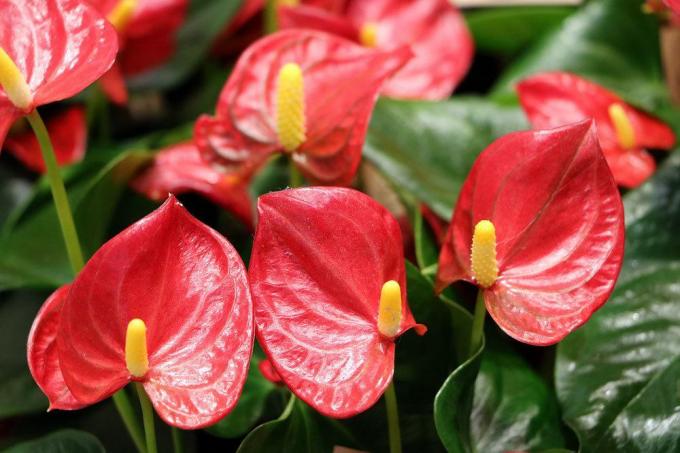
Family: Araceae, Arum Family
Homeland: Middle and South America
Poisonous: yes, contain substances that irritate the mucous membranes
Flowering time: all year round
Height: up to 100 centimeters
Location: warm and bright all year round, but not sunny
Watering and fertilizing: Keep it evenly moist all year round, do not use cold water, fertilize lightly between March and September
Further maintenance: ensure high humidity, spray or shower regularly, repot in spring
Pests and diseases: Leaves and spider mites curling up when the air is too dry and in direct sunlight, leaf spots, root rot, aphids and scale insects occasionally occur
Tip: When spraying flowering house plants, always cover the flowers, otherwise they will get unsightly brown spots.
Robust green plants
If you are looking for easy-care and robust houseplants that also tend to grow tall and give you that jungle feeling produce in the living room at home, has a significantly larger amount of decorative green and leafy plants Selection.
This subdivision into green and flowering plants is actually not botanically correct, because in yours In their natural habitat, almost all of the plants presented here develop flowers - with a few exceptions apart. On the other hand, the subdivision makes sense, since these species are given a decorative value due to their often large and conspicuous leaves. The flowers, on the other hand, are mostly inconspicuous and rarely appear in indoor culture.
Alocasia / elephant ear (Alocasia)

The giant-leaved arrow leaf (Alocasia macrorrhizos), also known as the elephant's ear, because of the characteristic shape of its leaves, grows particularly lush. These and other Alocasia species are best housed in a spacious greenhouse or a large flower window, as the magnificent exotic species need a lot of space.
Family: Araceae, Arum Family
Homeland: South East Asia
Poisonous: yes, especially the leaves of some species contain hydrocyanic acid
Height: up to 200 centimeters
Location: semi-shady to shady, all year round over 20 ° C, in winter a little cooler if possible (not below 17 ° C!)
Watering and fertilizing: keep well moist in spring and summer, water sparingly in winter, avoid waterlogging, fertilize sparingly every 14 days between March and August
Further maintenance: ensure high humidity, repot every two years
Pests and diseases: Rotting of the rhizomes due to too cool temperatures / drafts
Balsam apple (Clusia rosea)
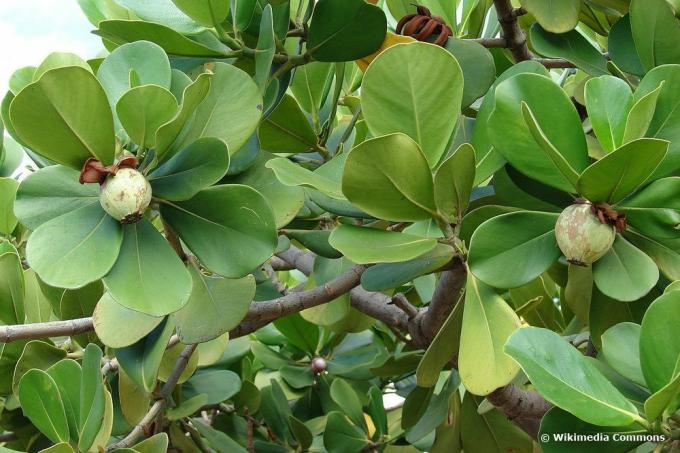
With good care and a sufficiently large planter, this species is one of the fastest growing indoor plants: heights of up to three meters are not uncommon in warm greenhouses. On the windowsill and in a correspondingly small pot, the plant naturally remains smaller. The balsam apple rarely develops pink, fragrant flowers that are reminiscent of camellias.
Family: Guttiferae, gutti-tree family
Homeland: Tropics and subtropics of South America
Poisonous: yes, skin and mucous membrane irritations as well as allergic reactions are possible
Height: up to 300 centimeters
Location: light to partially shaded, no direct sun, warm all year round (not below 18 ° C)
Watering and fertilizing: always keep slightly moist, water moderately, fertilize lightly every 14 days during the growth period
Further maintenance: Spray more often, repot if necessary in spring
Pests and diseases: rare
Note: The balsam apple was shipped to Europe as early as 1692, but is still quite rare in indoor culture. The easy-care and robust plant lives in its home on and between rocks.
Tree friend (Philodendron)

From the group of the bushy or climbing Philodendron species there is a large number of vigorous and robust indoor plants. The two most important varieties for indoor culture are probably the 'blushing tree friend' (Philodendron erubescens) and the climbing philodendron (Philodendron scandens).
Family: Araceae, Arum Family
Homeland: South America
Poisonous: yes, toxic to both humans and animals
Height: depending on the type and variety up to 150 centimeters
Location: light to partially shaded, warm all year round (not below 18 ° C)
Watering and fertilizing: always keep slightly moist, fertilize every 14 days between March and August
Further maintenance: Spray more often, repot if necessary, pruning possible
Pests and diseases: Scale insects and thrips from air that is too dry, root rot from wet, cold feet
Particularities: does not tolerate leaf shine
Dieffenbachia (Dieffenbachia)

The Dieffenbachia is a very easy to care for and robust plant, provided it is in a convenient location. In addition, the species is one of the favorite indoor plants of international breeders: There is a wide range of different varieties, including with variegated or almost white leaves.
Family: Araceae, Arum Family
Homeland: Tropical Central and South America
Poisonous: yes, in all parts, juice is irritating to the skin and mucous membranes
Height: depending on the type and variety up to 200 centimeters
Location: light to partially shaded, no direct sun, warm all year round
Watering and fertilizing: Keep moist all year round, water less in winter, fertilize in low doses weekly in summer
Further maintenance: Spray or shower off regularly, cut back older plants to prevent them from becoming bald, they will sprout again
Pests and diseases: Spider mites, thrips and aphids due to dry heating air, root rot due to excessively wet stand and fungal diseases due to unsuitable site conditions
Tip: If the location is too dark, the leaves of the varieties with variegated foliage turn green and lose their attractive color.
Dragon tree (Dracaena)
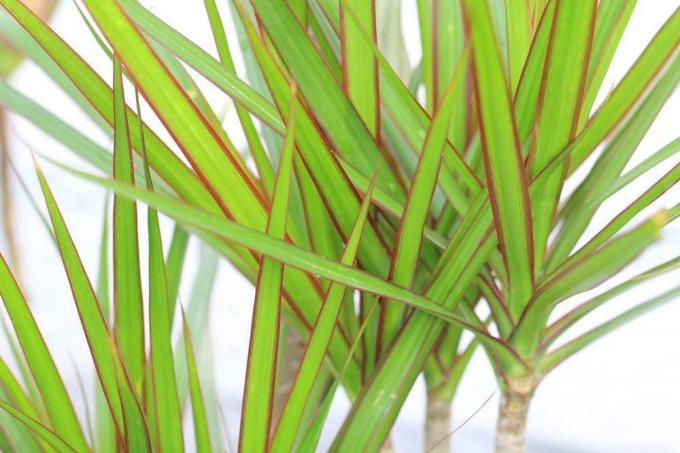
When looking for vigorous indoor plants, you should definitely keep an eye on the large group of dragon trees. These plants, also known as dracene, are easy-care and robust agave plants, of which a large number of species and varieties are available in stores. Especially nice for the living room are:
- Edged dragon tree, 'Dracaena marginata': narrow, arching leaves, variety 'Tricolor' with pink-cream-green striped leaf patterns
- Fragrant dragon tree, 'Dracaena fragans': fragrant dragon tree, broad, green-yellow or green-white striped leaves
- Snake lily, 'Dracaena sanderiana': white-yellow or silver-gray striped leaves
- 'Dracaena reflexa': olive-green foliage with cream-colored leaves
- 'Dracaena deremensis': blue-green, white-fringed leaves
Family: Agavaceae, agave family
Homeland: Canary Islands, tropical and subtropical Africa, Madagascar, Asia and Southeast Asian islands
Poisonous: Not toxic to humans, but slightly toxic to animals (v. a. Dogs, cats, rabbits)
Height: depending on the type and variety up to 200 centimeters
Location: light to partial shade, but not full sun, warm all year round
Watering and fertilizing: always keep it evenly slightly moist, avoid waterlogging and bale dryness (leaf fall!), fertilize every two weeks between March and August
Further maintenance: Spray more often, repot every two years
Pests and diseases: Brown leaf margins, scale insects and spider mites from dry heating air, withered leaf tips from casting defects, root rot from too much water
Particularities: Place variegated leaves as light as possible so that the leaves do not turn green

Tip: Dragon trees do not tolerate a leaf shine spray that is often used on indoor plants, but can be cut back at any time if necessary.
Window leaf (Monstera deliciosa)
Beautifully cut leaves and impressive growth have made the Monstera one of the most popular indoor plants. The robust and easy-care creeper needs a framework or an epiphyte trunk to hold onto. The numerous aerial roots must neither be injured nor removed.
Family: Araceae, Arum Family
Homeland: Mexico
Poisonous: all parts of the plant contain substances that are irritating to the skin and mucous membranes
Height: can be several meters high
Location: bright, but not directly sunny, all year round between 18 and 22 ° C, loves high humidity
Watering and fertilizing: Keep moderately moist all year round, fertilize low-dose every 14 days between March and August
Further maintenance: Wipe leaves / shower off regularly, spray more often, repot if necessary
Pests and diseases: Scale insects and spider mites due to dry air
Particularities: also thrives in the shade
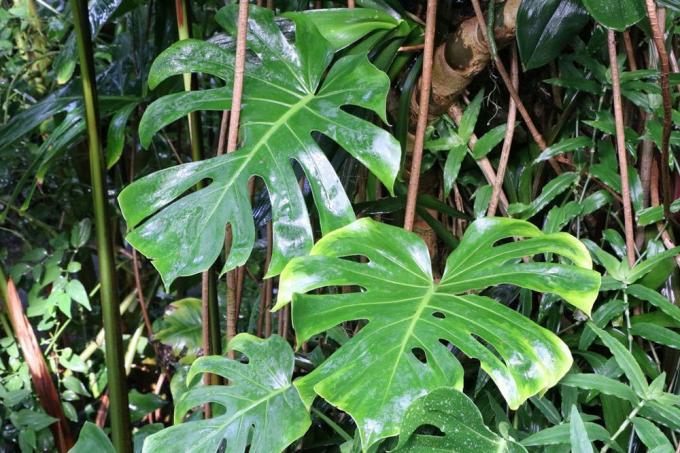
Ficus species (Ficus)
The Ficus group includes many robust and easy-care houseplants. The most prominent species is probably the weeping fig (Ficus benjamina), which like the The related rubber tree (Ficus elastica) grows room-high and comes in many green and variegated varieties is available. Other nice types are:
- Violin fig, 'Ficus lyrata': is only suitable in the long term for high and large rooms or entrance halls
- Congo fig, 'Ficus buxifolia': the bush-leaved rubber tree, very fast-growing
- Bengali fig, 'Ficus benghalensis': grows very tall, has beautifully shaped, leathery leaves
- 'Ficus rubiginosa': brown-red rubber tree, likes it cooler and can grow up to four meters high
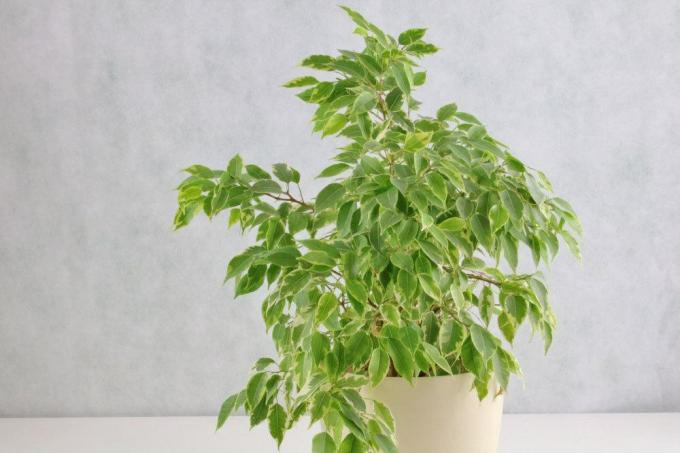
Family: Moraceae, Mulberry Family
Homeland: Tropics and subtropics
Poisonous: some species (e.g. B. Ficus benjamina) slightly toxic to humans and pets
Height: Depending on the type and variety, up to several meters
Location: very bright, but not sunny, room temperature all year round, high humidity
Watering and fertilizing: Water moderately, rarely in winter, avoid waterlogging (leaf fall!), fertilize every 14 days in summer
Further maintenance: Spray more often, repot if necessary, pruning promotes branching in some species
Pests and diseases: Scale insects, spider mites, thrips from dry heating air, leaf fall in winter as a result of cold and wet winter conditions
Radiant Aralia (Schefflera)
The Schefflera is one of the fastest growing indoor plants, which can easily reach a height of several meters with a suitable location and good care.
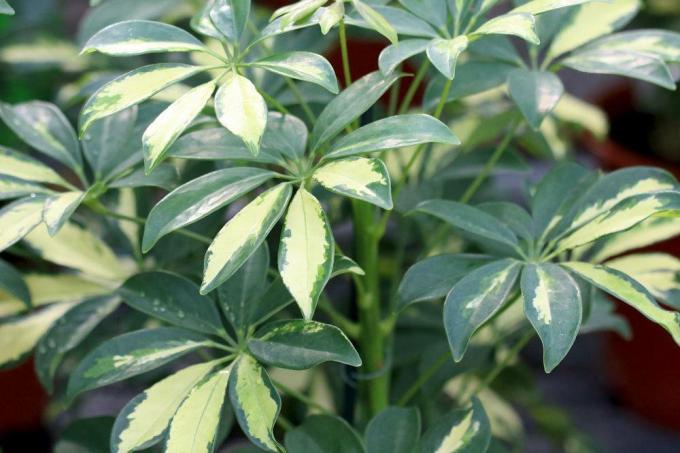
Family: Araliaceae, Aralia Family
Homeland: Taiwan, Northeast Australia, New Guinea
Poisonous: yes, all parts of plants are poisonous to humans and pets
Height: Depending on the variety and location, up to several meters
Location: light to partially shaded, in winter as cool as possible at 16 to 18 ° C
Watering and fertilizing: always keep slightly moist, fertilize every 14 days between March and August
Further maintenance: Spray or shower regularly, repot if necessary
Pests and diseases: Scale insects when winter conditions are too warm and dry, leaves fall when temperatures are too cool
Particularities: It is possible to limit the growth by cutting back or removing the point
Non-toxic ornamental foliage plants
If you have small children or pets, you value harmless indoor plants. That is why you will find two non-toxic species at this point.
Elephant foot (Beaucarnea recurvata)

In its Mexican homeland, the elephant's foot, also known as the bottle tree, grows as up to ten meter high, many shoots shrub and develops almost two meters long, drooping Leaves. Of course, the robust and easy-care houseplant does not achieve the same dimensions with us, but it can With good care, they can also grow meters high in pots or tubs and leaves up to 60 centimeters long form.
Family: Agavaceae, agave family
Homeland: Mexico
Poisonous: no
Height: up to 150 centimeters, with good care even higher
Location: light to full sun and airy, light and cool in winter (not below 10 ° C)
Watering and fertilizing: Water moderately in summer, keep almost dry in winter, avoid waterlogging, fertilize every four weeks from May to October
Further maintenance: Repot every two to three years, ensure drainage in the pot
Pests and diseases: Spider mites and scale insects from warm winter places
Particularities: In summer, put it outdoors in a place protected from rain.
Tip: You can achieve good pot drainage with all houseplants by choosing a pot with a drainage hole on the bottom and adding potsherds or granules as the bottom layer. Always remove excess irrigation water from the planter or the base.
Cobbler palm (Aspidistra elatior)
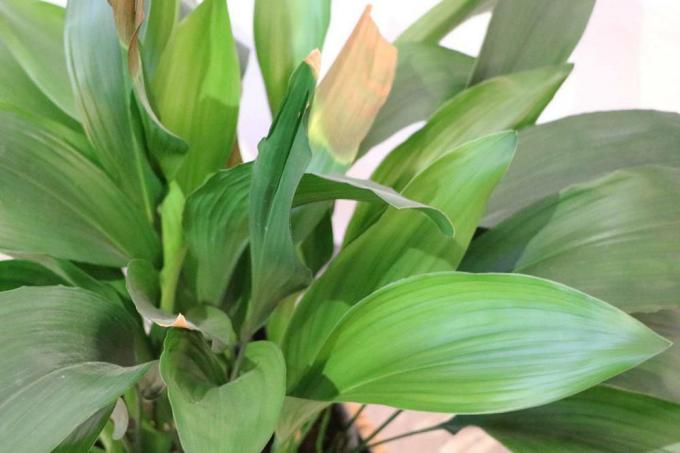
Family: Liliaceae, lily family
Homeland: China and Japan
Poisonous: no, harmless to humans and pets
Height: up to 100 centimeters
Location: light to shady, by no means sunny, fresh all year round and rather cool (not below 10 ° C), variegated leaf varieties rather keep them lighter and warmer
Watering and fertilizing: Keep moderately moist, do not let it dry out, avoid waterlogging, water little in winter, fertilize every two weeks between March and August
Further maintenance: Repot in spring if the pot is full of roots
Pests and diseases: Root rot from waterlogging, leaf burns from the bright sun, scale insects and spider mites in warm winter places
Tip: The plant loves being outdoors in summer, for example on the balcony or terrace.

